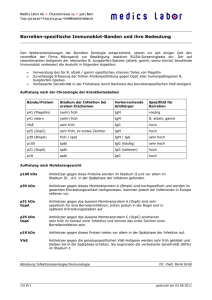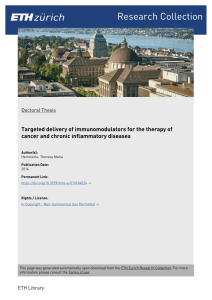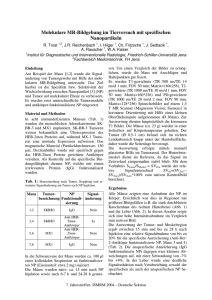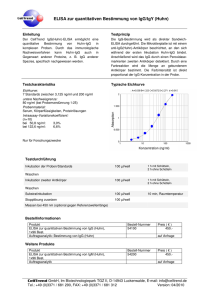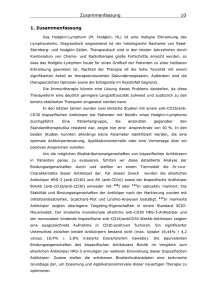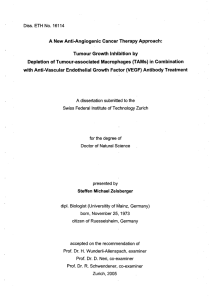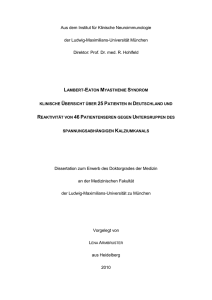Antibody-Drug Conjugates: over-expression and - ETH E
Werbung
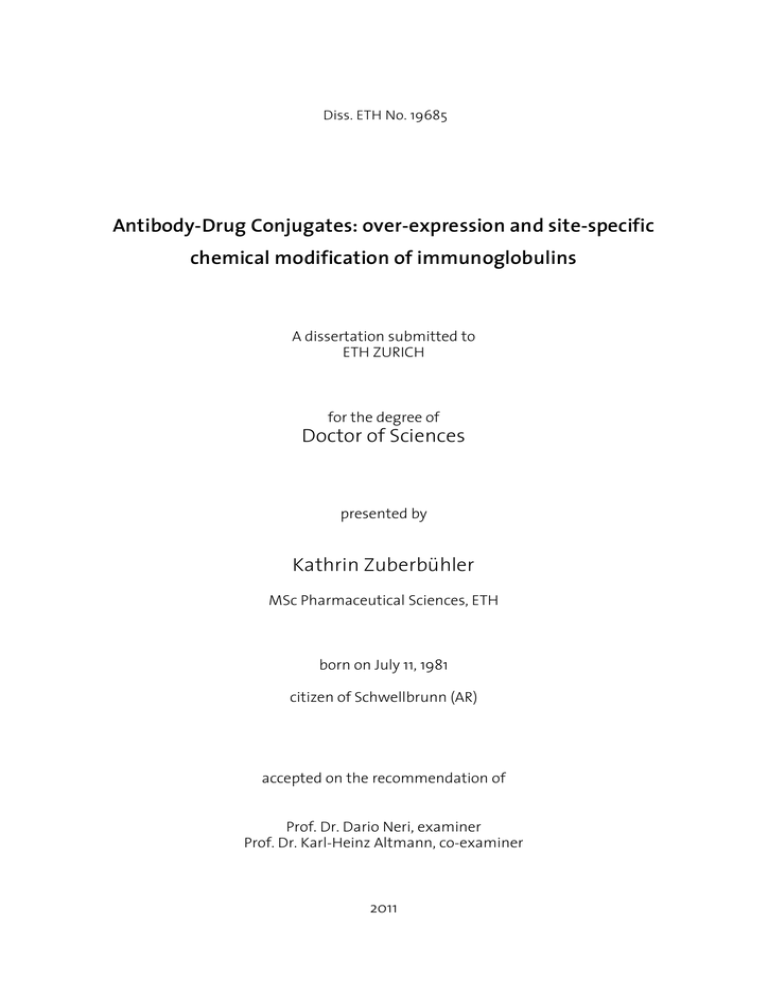
Diss. ETH No. 19685 Antibody-Drug Conjugates: over-expression and site-specific chemical modification of immunoglobulins A dissertation submitted to ETH ZURICH for the degree of Doctor of Sciences presented by Kathrin Zuberbühler MSc Pharmaceutical Sciences, ETH born on July 11, 1981 citizen of Schwellbrunn (AR) accepted on the recommendation of Prof. Dr. Dario Neri, examiner Prof. Dr. Karl-Heinz Altmann, co-examiner 2011 1 Summaries 1.1 Summary A major drawback of conventional anticancer therapeutics is presented by their poor selectivity between tumor cells and healthy tissue, which results in a high drug-related toxicity that limits the dosage that can be given to a patient. A promising avenue to overcome this problem consists in the targeted delivery of bioactive agents (e.g., drugs, radionuclides, cytokines) to the neovasculature of tumors. The formation of new blood vessels is a crucial step for cancer progression and the modified vasculature expresses specific antigens which are available for antibody-based pharmacodelivery applications. In this work, we focused on vascular-targeting antibody-drug conjugates, a therapeutic approach designed to deliver cytotoxic agents to the tumor site for cancer therapy. One basic requirement for the development of such antibody-drug conjugates is the availability of an ample amount of a high-affinity antibody targeting the tumor blood vessels. Hence, in the first part of this thesis, we describe a FACS-based selection procedure that can be used for the identification of high-producing cells, out of a population of stably-transfected cells. This fluorescence activated cell sorting method was exemplified using the clinical-stage human monoclonal antibody L19. This new screening procedure reliably yielded high-expression clones and homogeneous protein preparations. In addition, we developed a reformatting tool for scFv antibody fragments derived from synthetic antibody libraries to create fully human IgG antibodies. In the second part of this thesis, we investigated chemical modification of the glycan moiety of immunoglobulins for the efficient preparation of well-defined IgG-drug conjugates. The analysis of the oligosaccharide structures of IgG(F8), a human antibody specific to the alternatively-spliced EDA domain of fibronectin, indicated the predominant presence of a fucosylated core glycan. Following a periodate-mediated oxidation, this fucose moiety is particularly suitable for the selective generation of a hydrazone-linked conjugate. Several hydrazide-derivatives including cemadotin carbonylhydrazide (a dolastatin 15 analogue) were used for the site-specific 9 modification of the IgG(F8) and yielded preparations with excellent homogeneity. The ability of the cemadotin immunoconjugate to cause tumor growth retardation was assessed in a mouse model of cancer. 10 1.2 Zusammenfassung Einer der grössten Nachteile von konventionellen Krebsmedikamenten ist die ungenügende Selektivität zwischen Tumorzellen und gesundem Gewebe. Dies führt zu einer hohen Arzneimittel-bedingten Toxizität was die Dosis limitiert, die dem Patienten verabreicht werden kann. Ein vielversprechender Weg dieses Problem zu bewältigen ist, das Medikament zielgerichtet zu den neugebildeten Blutgefässen des Tumors zu bringen. Das Entstehen von neuen Blutgefässen, zur Versorgung des Tumors, ist ein wichtiger Prozess im Fortschreiten von Krebs. Diese speziellen Gefässe exprimieren spezifische Antigene, welche Antikörper-basierte Therapien ermöglichen. In dieser Arbeit beschäftigten wir uns hauptsächlich mit Wirkstoff konjugierten Antikörpern, welche die Blutgefässe im Tumor erkennen. Bei diesem therapeutischen Ansatz wird ein zytotoxischer Arzneistoff, um das gesunde Gewebe zu schonen, direkt zum Tumor gebracht. Eine Grundvoraussetzung für die Herstellung von solchen Antikörper-Wirkstoff Konjugaten ist eine genügende Menge Tumor-Gefäss spezifischer Antikörper für den Konjugierungsprozess. Darum beschreiben wir im ersten Teil dieser Doktorarbeit ein FACS-basiertes Sortierverfahren, welches erlaubt aus einer Vielzahl von stabil-transfizierten Zellen, Klone zu identifizieren, die eine überdurchschnittliche Menge an rekombinantem Antikörper sekretieren. Dieses Verfahren wurde am Beispiel des sich in klinischen Studien befindlichen monoklonalen Antikörpers L19 beschrieben und zeigt eine zuverlässige Selektion von hoch-exprimierenden Klonen und eine homogene Protein Ausbeute. Zusätzlich entwickelten wir eine Reformatierungs- methode um scFv Antikörperfragmente aus synthetischen Antikörper-PhagenBibliotheken in komplett humane IgG Antikörper umzuwandeln. Im zweiten Teil der Doktorarbeit untersuchten wir die Modifikation der Glykan-Gruppe eines Immunoglobulins um eine effiziente Herstellung gut definierter IgG-WirkstoffKonjugate zu gewährleisten. Die Analyse der Oligosaccharidstruktur des IgG(F8), ein humaner Antikörper, welcher gegen die EDA-Domäne von Fibronektin gerichtet ist, zeigte eine vorwiegende Fucosylierung der Kernglykane. Diese Fucose Einheit ist besonders geeignet um Wirkstoffmoleküle über eine Hydrazonbrücke an den Antikörper zu koppeln. Diverse Hydrazid-Derivate, unter anderem das Dolatatin 15 Analog Cemadotin Carbonylhydrazid, wurden für die Fucose-spezifische Modifikation verwendet und zeigten Konjugat-Ausbeuten 11 exzellenter Homogenität. Die Auswirkungen dieses Cemadotin-Antikörper-Konjugats auf das Tumorwachstum wurden in einem murinen Krebsmodell untersucht. 12
